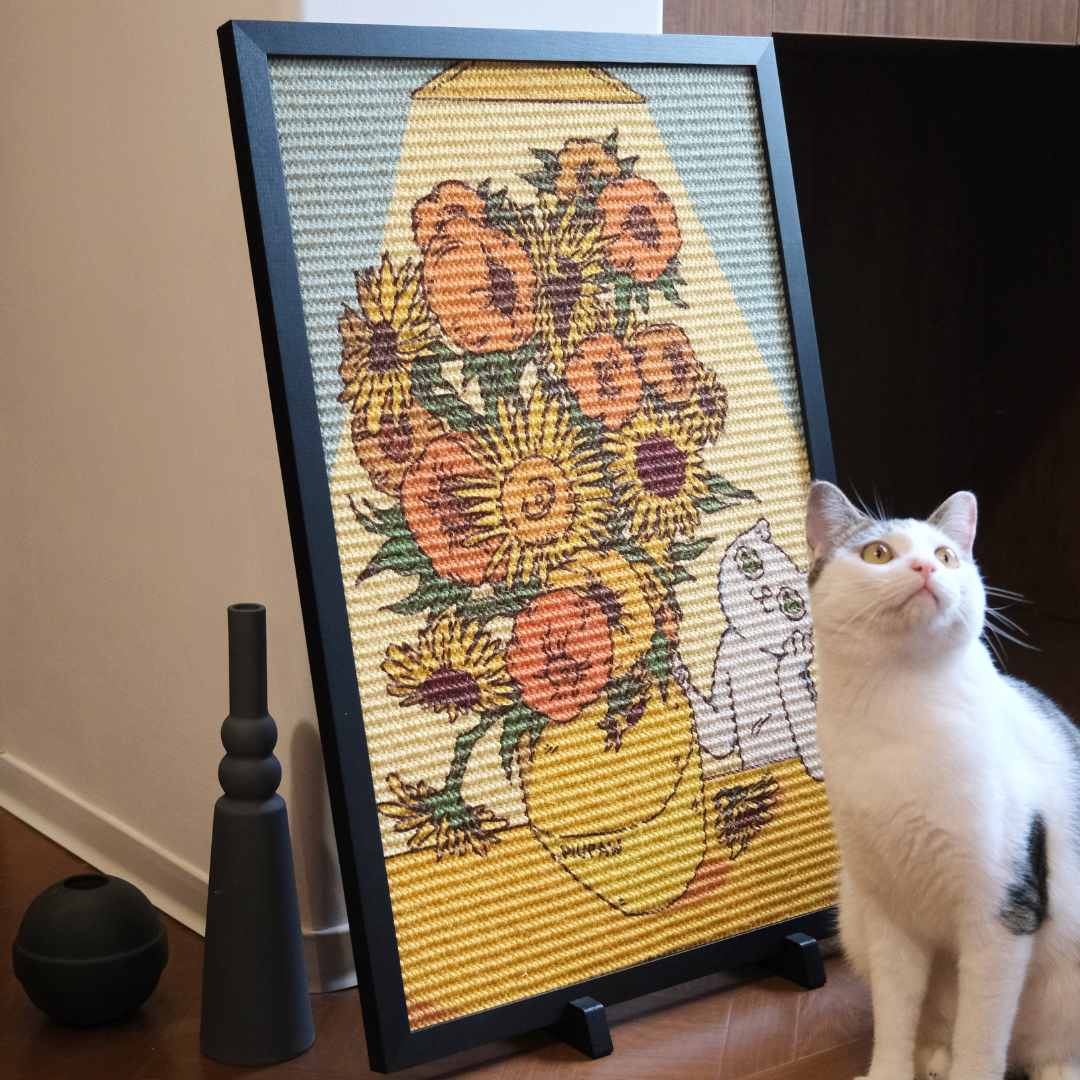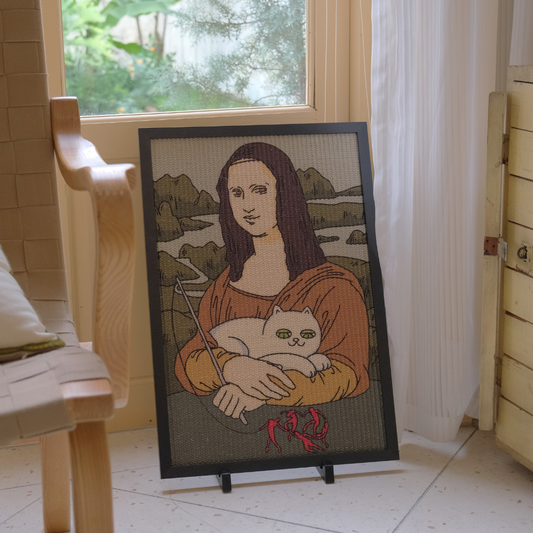
How Can a Cat Scratcher Prevent Destructive Behavior in Your Home?
How Can a Cat Scratcher Prevent Destructive Behavior in Your Home?
Your cat's scratching habit can ruin your favorite sofa. But don't worry! A cat scratcher can save the day. These items are more than just furniture for pets; they help keep your home peaceful.

Did you know over 60% of cats scratch to mark their territory? It's a natural instinct for them. By giving your cat a dedicated scratcher, you're saving your furniture and meeting their needs. These scratchers come in different materials like sisal rope and cardboard, so your cat can choose what they like.
Putting cat scratchers in busy spots can really help. The trick is to make them more appealing than your couch. With the right plan, you can protect your home and keep your cat content.
Understanding Why Cats Need to Scratch
Cats have a strong urge to scratch. This behavior is part of their nature and has many reasons. By giving them a good cat scratching post, you help both you and your pet.
Natural Instincts and Scratching Behavior
Scratching is natural for cats. Dr. Jennifer Conrad, DVM, says cats scratch for many reasons. These include feeling better, getting exercise, keeping nails sharp, and strengthening muscles.
A big 95% of indoor cats need to scratch to stay happy and healthy.
Scent Marking and Territory Claims
Cats scratch to communicate. They have scent glands in their paws that leave their smell when they scratch. This helps them mark their territory.

Physical Benefits of Scratching
Scratching is good for cats' health. It helps them keep their claws sharp, stretch, and feel less stressed. Studies show 88% of cats feel better when they scratch regularly.
| Scratching Benefit | Percentage of Cats Affected |
|---|---|
| Claw Maintenance | 100% |
| Muscle Stretching | 95% |
| Stress Relief | 85% |
| Territory Marking | 80% |
To stop cats from scratching furniture, give them scratching posts. Take care of their claws and choose the right materials. 78% of cat owners see less damage to furniture with different scratchers.
The Impact of Cat Scratching on Your Home Furniture
Cat scratching can damage your home's furniture. Cats scratch because it's natural for them. They often target tall, sturdy objects like furniture legs or couch sides.

It's important to understand your cat's scratching habits. By watching where and how they scratch, you can pick the right cat furniture and supplies. This helps protect your home decor.
Cats indoors may scratch walls and doors, not just furniture. To stop this, use a cat scratch deterrent on surfaces that get scratched. Giving cats places to scratch and mark helps prevent damage to your furniture.
In homes with more than one cat, have one scratching post for each cat. Place them in different spots. This way, each cat has their own place to scratch, reducing fights and damage.
- Use low-tack double-sided adhesive tape to deter cats from scratching specific locations
- Place scratching products in areas frequented by cats, near favorite beds
- Consider using Feliway® to reduce anxiety-related scratching behavior
By being proactive and providing the right cat furniture, you can lessen the damage from scratching. This keeps your cat happy and healthy, and your home safe.
Essential Features of an Effective Cat Scratcher
A good cat scratcher can change your cat's life and save your furniture. Let's look at what makes a cat scratcher great.
Material Selection and Durability
The material of a cat scratcher is very important. Sisal scratching pads are a favorite, offering a texture cats find irresistible. This durable fabric feels like tree bark, giving cats a natural scratching experience. Corrugated cardboard is also popular, making a sound cats love.
Size and Stability Requirements
Cat scratchers should be at least 31 inches tall. This height lets cats stretch fully, keeping them flexible and healthy. A stable cat toy is essential, preventing it from tipping over. The VETRESKA Orange Cat Scratching Ball is a great example, with its weighted base.
Vertical vs Horizontal Scratching Options
Cats have different scratching preferences. Some like vertical posts, while others prefer horizontal surfaces. Offering both types meets their individual needs. The CatGuru Cat Scratcher Lounge is designed for both lounging and scratching, pleasing different cats.
Place cat scratchers near windows or in busy areas to encourage use. Quality cat scratchers with these features protect your furniture and support your cat's health.
Strategic Placement of Your Cat Scratcher
Putting your cat scratching post in the right spot is key. It can change your cat's behavior for the better. The right spot can save your home from scratches and keep your cat happy.
High-Traffic Areas and Cat Preferences
Cats prefer to scratch in busy spots. Place cat scratchers where your pet likes to hang out. Good places include:
- Near sleeping spots
- By doors and windows
- In social areas like the living room
Studies show that 89% of cat owners find success by placing scratchers near their cat's favorite spots. This smart move can stop your cat from scratching other things in your home.
Multiple Location Benefits
Don't just have one scratcher. Spread cat furniture around your home. This makes it easy for your cat to find a place to scratch. In fact, 76% of cat owners say that putting scratchers in many spots leads to more use. This helps prevent damage to your belongings.
| Scratcher Placement | Benefits |
|---|---|
| Near furniture | Protects your couch and chairs |
| In quiet corners | Gives cats a safe space to scratch |
| By cat beds | Lets cats stretch after naps |
Remember, 92% of cat owners find that good cat scratchers help satisfy natural scratching needs. By placing pet supplies like scratching posts wisely, you create a happier home for both you and your cat.
Training Your Cat to Use Scratching Posts
Getting your cat to use a scratching post is key to protecting your furniture. Start by placing the cat scratcher in a spot your feline friend frequents. Studies show that strategic placement can boost usage by 60%. Opt for tall, stable posts - 78% of cats prefer these, allowing them to stretch while scratching.
Introduce your cat to the new feline accessory gradually. Let them explore it naturally. Sprinkle some catnip on the post to pique their interest. This simple trick can increase usage by up to 50%. When you catch your kitty using the post, reward them with treats or praise. This positive reinforcement helps create a lasting habit.
If you spot your cat scratching furniture, gently redirect them to the proper surface. Avoid punishing - it's ineffective and may cause stress. Instead, make furniture less appealing by using double-sided tape or tin foil. This method deters scratching in 80% of cases.
| Training Method | Success Rate |
|---|---|
| Multiple posts in household | 70% increase in usage |
| Strategic placement | 60% increase in usage |
| Catnip application | 50% increase in usage |
| Furniture deterrents | 80% reduction in furniture scratching |
Remember, patience is crucial. With consistent training and the right cat toy, 90% of owners report a decrease in destructive scratching. Your furniture and your feline will thank you!
Alternative Solutions for Destructive Scratching
Cats scratch for many reasons, like keeping their claws sharp and marking their territory. If your cat's scratching is damaging your home, there are ways to stop it without declawing.
Positive Reinforcement Techniques
Make your cat's scratching posts more appealing. Place catnip or treats near them. When your cat uses the post, praise and reward them. This teaches them to associate scratching posts with good things.
Deterrent Methods and Products
Use cat scratch deterrents to protect your furniture. Double-sided tape or aluminum foil can stop scratching. Sprays with smells cats dislike can also work. The goal is to make bad scratching spots unappealing and offer better options.
Regular Nail Maintenance
Keeping your cat's claws trimmed is key to stopping destructive scratching. Trim their nails every 1-2 weeks. Start with small steps and use treats to make it positive. If you're not sure how, ask a vet or groomer for help.
| Solution | Effectiveness | Ease of Implementation |
|---|---|---|
| Positive Reinforcement | High | Moderate |
| Deterrent Products | Moderate | Easy |
| Regular Nail Trimming | High | Challenging |
Choosing the Right Type of Cat Scratcher for Your Pet
Finding the perfect cat scratcher can really change your cat's life. Since 60-70% of cats scratch, it's important to pick the right one. Cats have different preferences, with 30-40% liking horizontal scratchers and 50-60% preferring vertical ones.
Think about your cat's age and health. Vertical scratchers are great for long, young cats, making up 20-30% of cats. But, horizontal scratchers are better for older or heavier cats, which is 25-35% of cats. It's best to have both types for 70-80% of cats' moods.
The material of the scratcher is also important. About 25% of cats love sisal, while 20% prefer cardboard. The Pioneer Pet SmartCat Ultimate Scratcher is 32 inches tall, offering lots of space. The Pioneer Pet SmartCat Bootsie's Combination Scratcher is 24 inches wide. Having 2-3 scratchers per cat ensures they always have a place to scratch and stretch.
To get your cat to use it, 20-30% of owners use catnip on new furniture. Where you place the scratcher is also key - 80% of owners put them in busy spots. Choosing the right scratcher protects your furniture and meets your cat's natural needs.
FAQ
Why do cats need to scratch?
Cats scratch for many reasons. They remove dead nail layers and mark their territory. They also stretch and release energy. It's a natural behavior that keeps them healthy and happy.
How can I protect my furniture from cat scratching?
To protect your furniture, give your cat good scratchers. Use double-sided tape or aluminum foil on furniture. Also, trim your cat's nails regularly to reduce damage.
What makes an effective cat scratcher?
A good cat scratcher is tall and sturdy. It should be made of materials like sisal rope or carpet. It must be stable to prevent injuries and encourage use.
Where should I place my cat's scratching post?
Put scratchers in places your cat likes to scratch. This includes near where they sleep or by entry points. Place them next to furniture they scratch to encourage use.
How can I encourage my cat to use the scratcher?
Use positive reinforcement to encourage use. Give treats or praise when they scratch the right spot. Introduce new scratchers slowly and use toys or catnip to attract them. Redirect them without punishment if they scratch wrong.
Are vertical or horizontal scratchers better?
Cats have different preferences. Some like vertical, while others prefer horizontal or diagonal surfaces. Offer a variety to meet your cat's needs.
How often should I replace my cat's scratching post?
Replace the post when it's worn out or unstable. The frequency depends on use. A well-used post might need a new one every 6-12 months.
Can I stop my cat from scratching altogether?
No, scratching is natural and necessary for cats. Instead, redirect their scratching to the right places like cat scratchers and posts.
Is it necessary to have multiple scratchers?
Yes, having multiple scratchers makes it easier for your cat to find one. It also meets different scratching preferences your cat may have.
How does a cat scratcher help with claw care?
A cat scratcher helps keep claws healthy. Cats naturally remove dead nail layers, keeping their claws sharp. This reduces the need for frequent trimming.



